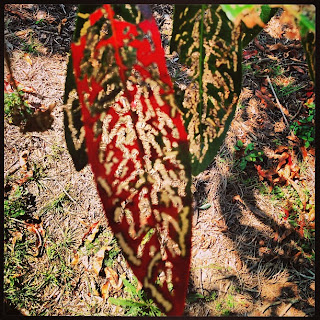I've just reached that satisfying stage of feeling as though I've been in this studio for ages. It's remarkably disorienting trying to work in a studio space missing that certain energy field that comes from long, productive hours inhabiting the work space. Even though its still early days here and I've not spent all that much time painting since the set up about 4 weeks ago there's a satisfyingly dense lived-in feeling present here now.
Key to that was, in part, having people visit here... sparking some great conversations ... and the 4 hour class I held Saturday for two young students with a keen sense of curiosity for the natural world... the first of many I hope!
Assembling books and materials before the class started.
Sophie and Jackson mid afternoon.
One of Jackson's numerous drawings... he's spent a great deal of time in Botanic Gardens, National Parks and anywhere he can engage with the natural world ever since he was very young thanks to his parents willingness to enable this contact. His memory and understanding of plants, seeds, eco-systems etc is stunning ... and made for some excellent discussion through the day.
One thing discussed at length were issues around Biodiversity. It was a most rewarding experience to find two students, Jackson at 12 and Sophie at 9, so keen to take part in an intensive workshop that extended over 4 and a half hours, with lunch consumed at the work table so keen they were to keep going!
I look forward to running many more workshops along this line in time to come.
Found here
I'm presently cooking up ideas for a project within my project... ready for November when i wish to launch my new studio. I've found a way to combine several passions into one idea which i will announce when the time comes.
These are a new development in my studio practice ... Biodiversity Conversation Plates ... part of a whole concept to be launched November. Hand-painted they one-off unique works and promise to be an affordable art option which I'm really enjoying creating and have broad application in people's homes, work-places and more.
Stay tuned for more on this in the lead up to the Studio launch in November.
If interested in Classes or more information on whats going on send an email and I will put you in the picture.
Cheerio!
S







.jpg)









